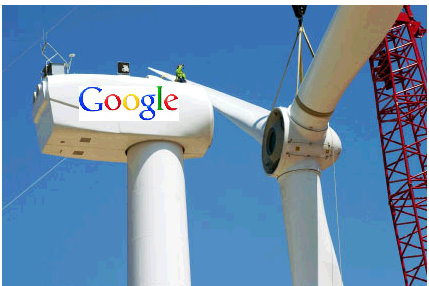Google Adapts Its Ten Rules to Datacenter Building
Near the birth of Google, the founders wrote a Ten Commandments of sorts to be successful in the tech industry. Those principles, otherwise known as "Ten things we know to be true," guided their progress from their early days to today. In their eyes, those rules helped them achieve their current status as a tech giant.
 Being a tech giant means getting in front of new technologies that promote energy efficiency and a lot of that emphasis has lately fallen on the designing and building of greener datacenters. On Tuesday, Google's Vice President of Data Centers Joe Kava referenced Google's founding principles when speaking on how to properly build datacenters at The Green Grid Forum.
Being a tech giant means getting in front of new technologies that promote energy efficiency and a lot of that emphasis has lately fallen on the designing and building of greener datacenters. On Tuesday, Google's Vice President of Data Centers Joe Kava referenced Google's founding principles when speaking on how to properly build datacenters at The Green Grid Forum.
The number one, and potentially most important, rule is "Focus on the user and all else will follow." This notion has already incidentally led Google to green-conscious practices, as they have maintained many servers across data facilities across the world. The idea behind that is fairly simple: people get faster search results the closer they are to a Google server.
Kava started really delving into the notion of green computing in Google, though, when discussing their second rule, "It's best to do one thing really, really well." Initially Google was focused on becoming the top search engine, relying on the resulting ad revenues to fund themselves. Since then, they have branched out into email, cloud hosting, social networking and more, but the thing they do really, really well is their search engine.
Their process of building and maintaining a bevy of datacenters across the globe has recently been refocused toward increasing energy efficiency. An example of this includes placing those sites in areas where the utility offers renewable energy options, such as wind and solar.
Another unique implementation of greener principles involves their datacenter in Finland, which Kava touched on in referring to the "You don't need to be at your desk to get answers" rule. Finland, along with fish, cell phones, hockey, and social democracy, is known for its punishing cold. A datacenter such as Google's could highly benefit from relying on the outside air to cool the facility as opposed to energy-intensive cooling systems.
Google adapted that principle, along with the "Great just isn't good enough" rule (number seven) to the datacenter in Dublin. That also relies on outside air, significantly lowering its energy needs.
These rules apply not only to the process of lowering a facility's energy needs but also increasing the percentage of energy used that is renewable. In adapting the "You can make money without doing evil" principle, Kava noted the datacenter in Belgium that uses water from a local canal in its cooling operations along with the one in Georgia that utilizes treated waste water for the same reason as examples of cost efficient methods that also benefit the environment.
Finally, information sharing for the benefit of the green community has been a point of emphasis at this year's The Green Grid Forum. Kava cited Google's Green section as an important step in that direction.
Related Articles
Improving Computational Capabilities Using Green at CEBio
Groundwater Flows through New Datacenters










